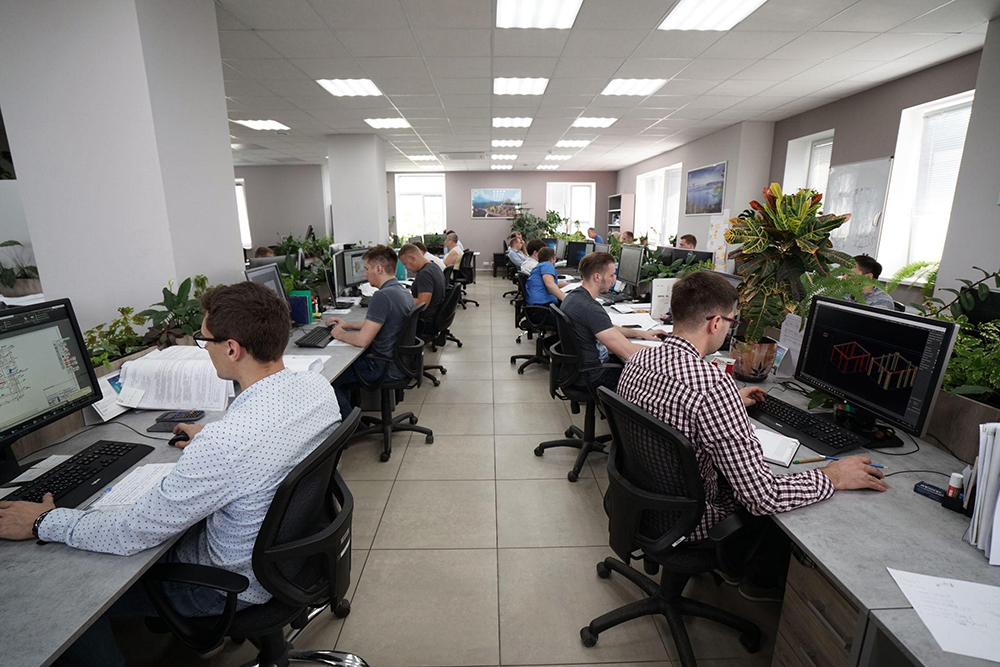Forbes Published an Expert Opinion of UST Inc.'s CEO Nadezhda Kosareva

Forbes, one of the world's most authoritative and well-known financial and economic magazines, has published an expert opinion by Nadezhda Kosareva, CEO at Unitsky String Technologies Inc.
The article focuses on the problem of integration of science and business, specializing in the development of high-tech inventions. This publication discusses the difficulties faced by enterprises in building a dialog between these two spheres. In addition, the material emphasizes practical recommendations that will become the basis for the development of scientific direction among high-tech companies.
Read more about the opinion of UST Inc.'s CEO in the article below.
The Integration Of High-Tech Businesses And Science
In today's world, it's hard to imagine creating a full-fledged market product from the high-tech sphere without close interaction between business and science.
To withstand competition, companies cannot rely solely on good marketing, modern equipment and sound financial investments; they need innovation. Innovations are what help bypass competitors, occupy a new niche and, therefore, create demand.
As the head of a scientific and engineering company that develops high-tech transportation and infrastructure products, I value the development of the scientific sector as equally essential as other factors like marketing.
Our company has made significant progress in integrating business and science, and I want to share practical recommendations that have made this possible. But first, let's talk about the numbers—they will show how important it is to invest in the science sector.
Active Investment: A New R&D Trend
If you look at the experience of major technology giants, almost all of them use some form of integration between business and science. For example, a record amount of funding for science was recorded in 2022, when 2,500 of the world's largest companies invested about 1.25 trillion euros in research and development. Compared to 2021, this figure increased by 141 billion euros. The ranking of leading countries in terms of R&D expenditures is topped by the U.S.
For example, Apple invested $97.37 billion in research and development between 2018 and 2022. Over the five years, Apple's spending in this segment increased from $14.24 billion in 2018 to $26.25 billion in 2022. According to the company, the R&D investments are meant to differentiate the firm's products and services in the market.
The Gradual Integration Of Science And High-Tech Business
Although the partnership between science and business is strengthening its position in economically developed countries, globally, I see companies' interest in developing scientific direction as still insufficient.
The low involvement of enterprises in scientific activities is caused by a number of factors:
- Long payback period of investments in this direction, and often unprofitability.
- Reluctance of company managers to invest resources in the scientific sphere due to the labor-intensive and "intangible" results of such activities, as well as the complexity of building processes.
- The need for quick results, while the specificity of scientific activity implies long-term implementation of projects.
- Lack of staff competencies in science and process-related requirements.
- Fear of submitting statistical and other reports to state authorities, which may contain elements of commercial secrecy.
- Shortage of available working capital for investments in research, prototypes, patent fees and patent term extension, etc.
This situation significantly slows down the rapprochement between science and business; when the priority of companies is mainly directed at implementing already created solutions, it jeopardizes the development of new inventions.
The World Intellectual Property Organization's "Global Innovation Index 2023," for example, notes that after a boom in 2021, investment in science and innovation did worse in 2022. There has been little, if any, progress in this area in recent years. Going forward, I believe that continuing along this trajectory could negatively impact business processes.
To prevent this from happening, we need to focus on scientific activity that can help stay ahead of market trends and improve the quality of products. For example, in my company, which develops transport and infrastructure complexes in overpass design, it's important to apply scientific principles to create safer, more efficient and environmentally friendly solutions. When your scientific developments are tested, it gives your product a compelling advantage in the market.
Individual solutions are protected by patents, know-how, as well as by registered and performed R&D. All this builds the credibility of a company and the technologies it creates. At the same time, the increasing pace of scientific achievements and involvement of employees in the scientific sphere help transform promising research results into intangible assets.
How To Bring Science And Business Together
- Strengthen partnerships with scientific and educational institutions. Competent experts from universities and institutes can be involved in the implementation of innovative projects. Such cooperation provides companies with access to a pool of scientific professionals to create products that meet market needs.
- Build a scientific base. Create R&D centers to practice innovative solutions with specialized research units and scientific and technical councils.
- Pay attention to the implementation of R&D. Include state registration, patenting of intellectual property objects and publication of scientific articles in specialized publications.
- Nurture the scientific approach in the company. Organize and conduct thematic scientific conferences, seminars and workshops and training sessions for young people and students.
- Raise the scientific qualification of employees. Aid employees in enrolling in master's and postgraduate programs and find ways to attract candidates with doctors of science or expertise from universities and research institutes to your company's staff.
- Introduce internal mechanisms to incentivize scientific activity in the company. For example, you can create a system of rewarding personnel for achieving scientific results: Publication activity, participation in thematic events and improvement of scientific qualifications.
Summary
The strategic success of the science-business alliance is based on the mutual complementation of competencies. For example, the mandate of scientific activity includes the development of innovations and R&D. Businesses, in turn, coordinate the processes of creation and commercialization of finished products. Ultimately, the integration of the two areas benefits both parties.
If these components work synchronously, high-tech companies can contribute to a unique entrepreneurial environment where business and science go hand in hand. After all, investment in science is not a temporary advantage but a large-scale game for the long term.
More news

Interviews
10 September 2025
String Technologies in Russia: Exclusive Interview with Sergey Smolnikov
In a conversation with UST Inc.’s Deputy General Director for Marketing, Evgeny Petrov, they discuss the key infrastructure challenges facing modern Russian cities.

Interviews
19 July 2022
The Team of UST Inc. Has Only the Best: Another Confirmation Received
Head of Project Management of Unitsky String Technologies Inc. Maksim Gusev received a certificate from the International Project Management Institute. Just over 1,000 people in the world have such a certification. We spoke with Maksim to find out the details.

News
27 May 2022
Unitsky String Technologies Inc. Successfully Passed the Audit
UST Inc. passed the annual audit of individual financial statements, which was conducted by FinExpertiza-Bel Audit LLC. Annual individual financial statements accurately reflect the financial position of the company.

